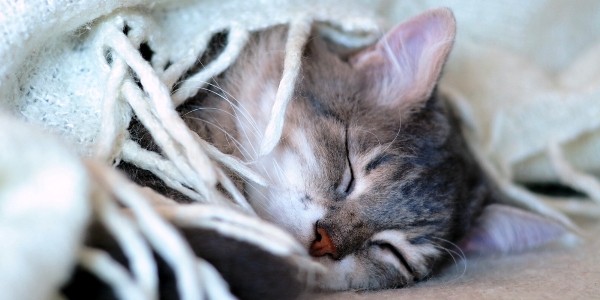
If your pet cat is experiencing feline inflammatory bowel disease symptoms, changing the diet is a good way to test progress.
Why your pet cat may have feline IBD
Diet and Nutrition are of increasing interest to cat owners (it has always totally fascinated cats!) and as we all move further from a “natural state” of food gathering, new problems appear.
There is no getting away from the fact that the perfect diet for cats is mice. However, most modern town cats lead a rather more regal existence these days, and hunting is a recreation rather than a raison d’être, so humans must recreate a diet which fulfils all of a cat’s dietary requirements.
How food contributes to the feline IBD problem
First came the tinned foods, and cats trained their owners which were worthwhile to buy by refusing to consume lesser quality offerings.
Pet cats are very good at telling you what works for them no matter how sick or healthy they are!
Feline nutritional needs are much more highly refined than dogs or humans, particularly relating to protein quality and quantity.
It is not metabolically worthwhile for a cat to eat food less than 20% protein of “dry matter”.
The move to dried foods has resulted in production of high proteins levels to reflect this requirement also.
The role of additives in feline inflammatory bowel disease
Now comes the interesting part.
Cats can cope with a lot of things, but it seems that they draw the line at “additives”.
In order to entertain owners and cats, colourings, flavourings and preservatives have been added to most tinned and dried foods, particularly the cheaper “supermarket” products. In fact, often the “flavour” is only sprayed on the outside of the biscuit, to minimise the use of the expensive parts of the formula.
Vets are seeing an increasing number of cats who vomit up their food. Some of the colourings in the dried food actually stains the carpet, so what do you think it is doing to the cats’ intestines?
These vomiting cats only need to be converted to a high quality, (preferably preservative free) dried food to improve.
The cats often start out by vomiting more furballs than usual, then start vomiting food. Some then progress to the near-cancerous stage of IBD, and some of those go on to develop cancerous (usually lymphoma) lesions in the bowel.
It’s pretty serious stuff.
How the cat vet can treat feline ibd
Start diagnosing with a feline inflammatory bowel disease diet
Food trials are the main diagnostic tool, and usually start with ‘roo meat and Hills Prescription Z/D or Royal Canin Hypoallergic.
The diet is readily accepted by most cats and those with IBD tend to be fussy because of the nausea created by the condition.
Royal Canin, Nutrience, Whiskas Professional and Hills Science diet (particularly Sensitive Stomach variety) are all high quality diets, with very small amounts of preservative
They are all fine except for the really sensitive cat (who has usually been sensitised by eating the highly coloured varieties of food rather than starting and staying on a premium diet).
There are so many options for feeding your feline friend now, that even the educated assessment of foods appropriate for a cat afflicted by IBD becomes a mammoth task.
Gluten intolerance is common in the ragdoll breed, and up to 30% of the general cat population will become food intolerant as some stage (that leaves 70% who CAN eat the ordinary processed foods though).
It seems that the IBD cat can develop allergies to whatever food it eats over time and vomits them too. Once a diet change is no longer working then mediCATion becomes necessary.
What to do if a feline IBD diet trial doesn’t help?
Starting with Prednisolone, and using it on an alternate day or twice weekly regime rarely causes problems. However as the disease progresses, more medicines need to be added in.
Metronidazole (antibiotic) is very useful. And if the cat becomes diabetic or has problems with Prednisolone, then Budesonide is next on the list. Budesonide (usually compounded specially at a pharmacy to get the tiny cat dose) is given daily, and produces less problems for diabetics (some even go into remission off their prednisolone), as most of the drug stays in and only works in gut. However, it is not a failsafe, and urine checks are still needed to make sure diabetes does not recur, or a urinary tract infection does not crop up. These drug’s job is to ‘bash the immune system into submission’, which leaves the cat more vulnerable. It is a balancing act.
Weight checks are also the key to monitoring success, as weight loss will flag the fact the cat is not absorbing the calories it needs.
The ‘final medication upgrade’ is onto chemotherapeutic agents like chlorambucil (Leukeran).
The current school of thought is that intestinal biopsies are required to positively identify which type and stage on the food intolerance – IBD – GI lymphoma / cancer continuum the cat is. This is not a minor procedure – it is a full exploratory laparotomy and multiple pieces of the intestine etc are sampled. If you are in there, you have to be thorough. The results provide the most reliable guide to drugs needed and prognosis (length of time your cat will live comfortably).
However, I think it is OK in many cases, to just trial the drug. If it doesn’t work, the biopsy is still a viable option, but the chances of success are reduced. A balancing act.
You may also find Dr Kim’s article on feline diabetes useful…
